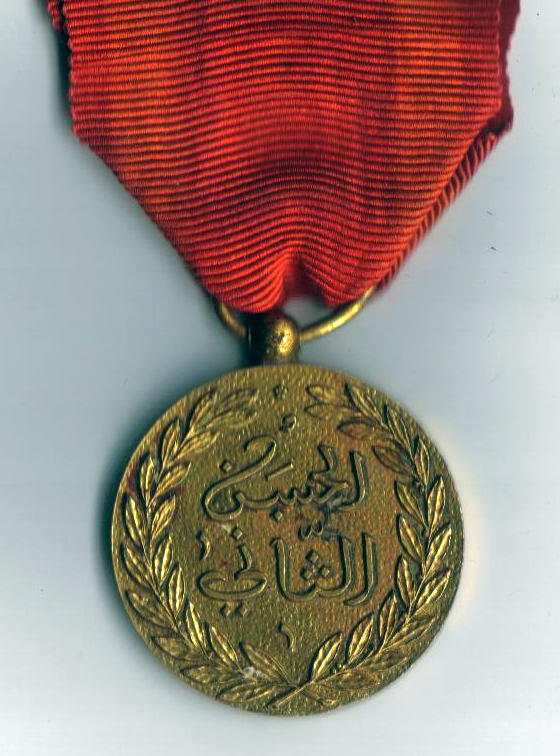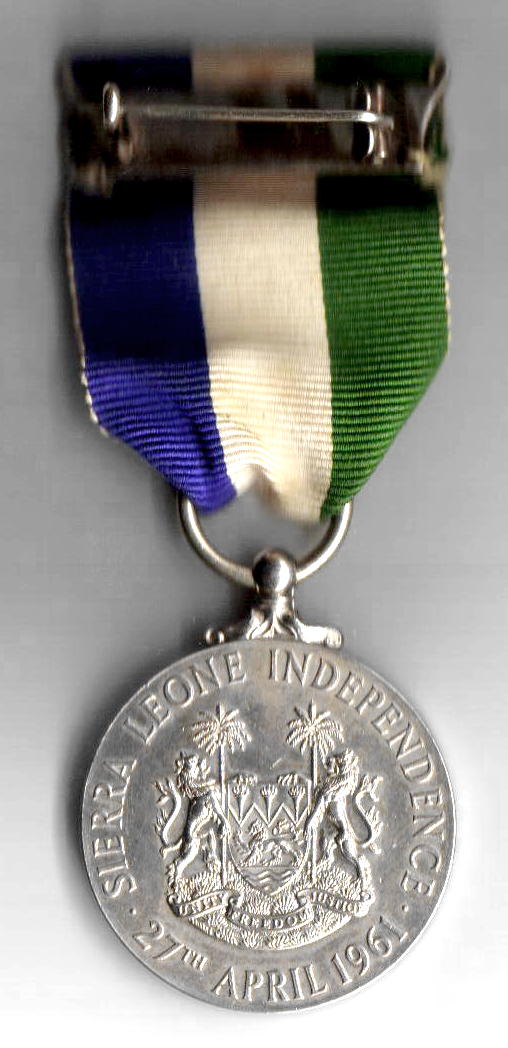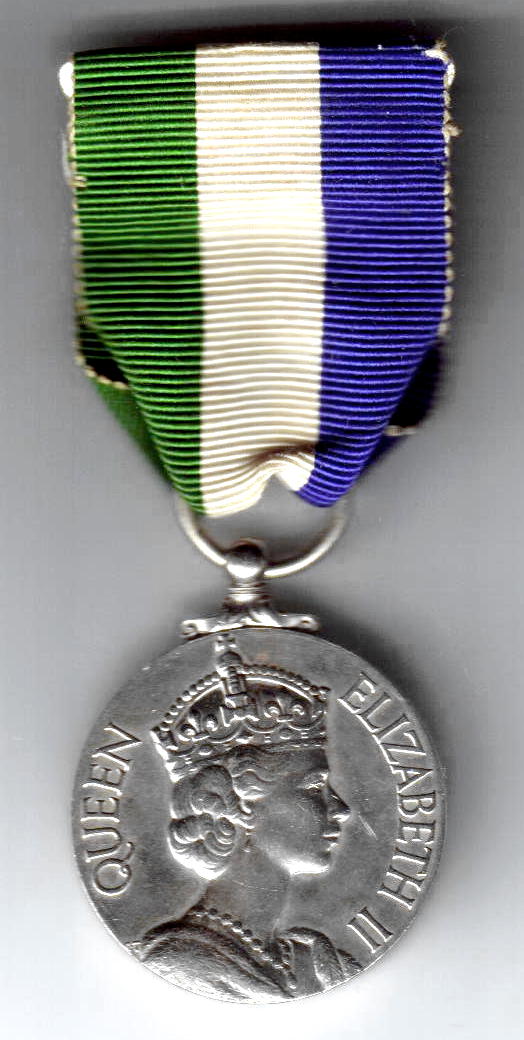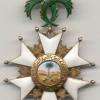-
Posts
1,287 -
Joined
-
Last visited
-
Days Won
32
Content Type
Profiles
Forums
Blogs
Gallery
Events
Store
Posts posted by oamotme
-
-
Dear Megan & Gentlemen,
A long story but for full details see my article on this award in JOMSA. In short this badge was used as a model for a propoosed Kathiri order but never got much beyond the initial design stage - the 1967 communist take over thwarted the formal institution of the order. The badge illustrated, missing its owl suspension, is in fact a Schlaraffia badge (made in Vienna) from Sarajevo and the inscription reads "This is the medal of our great Imam". Schlaraffia were a fraternal society extant in Austro-Hungarian society and each "club" had its own badge. A number of such badges were sold at a Dorotheum Vienna auction a couple of years ago.
Kind regards,
Owain
0 -
Whilst the theme of palm and crocodile is not new, I am not convinced of the ability of local craftsmen to execute such a piece - if you look at early examples of the Ethiopian Order of the Star, from the 1880's, whilst highly attractive, they are primitive and I would argue that if indeed Khartoum at this time had the ability to manfacture it would be on a level of tribal jewellery which was and remains basic in design.
Also at this period, say 1825 onwards, this was the beginning of Turco-Egyptian expansion into the area, and Khartoum in 1836 was suffering from drought, famine and cholera epidimics.
The design as described infers a more European influence than African thus possibly an attempt to either imitate locally or impose from afar an award.
On looking at my copy of Trost, published in 1910, the order is referred to on page 92 but no illustration and Trost has no bibliography thus no source for this award - fact or fiction?
Regards, Owain.
0 -
Gentlemen,
In the aformentioned early edition of JOMSA's predecessor a submission by James W. Peterson:
"Trost in "Ritter und Verdienstorden" describes this order as having been established in the Sudan in 1837 in one class, to reward princely persons and foreigners for extraordinary service, but soon abolished. It does not seem to have been noted by any other wrtier.
The badge is described as a 7-pointed brillianted star, surmounted by a turban, worn on the neck on a golden chain. The medallion has an alligator at the foot of a palm, enamelled in natural colours, surrounded by a green-enamelled ring with gold Arabic characters reading, "God is Great".
The breast star is a golden rayed star with the superimposed obverse medallion encircled with precious stones."
In twenty years I have seen no other reference to this award - even if this award did exist would any of the leaders (tribal) in the area that became Sudan had the ability to institute, commission and manufacture such an award? I suspect that Trost may have confused this with something else. Any ideas?
Many thanks,
Owain
0 -
And another:
Row A - Liberation Order; UAR Comm.; Evacuation.
Row B - Victory; Independence: LSGC; 1948 War.
Row C - 1949 M'd Ali; Army Day; 10th Rev.; 20th Rev.
The device is missing from the Liberation Order - the same ribbon was used for the Liberation Order (Officers) and Liberation Medal (Other Ranks) - does the device signify the Order as opposed to the Medal?
Owain
 0
0 -
Chris,
The bars below illustrate service from the 1948 War through to the 2Oth Anniversary in 1972 of the Revolution (coup) - at least 24 years service:
Row A - Liberation Order; UAR Commemorative; Evacuation; Victory
Row B - Independence; LSGC; 1948 War; 1973 War
Row C - 1949 Mohammed Ali Centenary: Army Day; 10th Rev.; 20th Rev
Interesting to note that there are two medals from before the change of regime - the 1948 War was post 1952 worn reversed thereby hiding the profile of King Farouk.
Owain
 0
0 -
Chris,
Good to see your various bars - I will scan mine and inlcude in the next few days.
As we both know trying to get examples of all the medals to match the ribbons is a dificult task!
Regards,
Owain.
0 -
Hallo
This is quite beside the point, but i was wondering if there are any members in the forum who speak welsh?,if ther are,i wad be so grateful if any o them could translate this thing intae inglish,scots or gaelic
Thanks in advance
william tuna
William
How about, "Forgotten, he will not be".
Owain Raw-Rees (1RWF 1978-84)
0 -
James,
Quite possibly - someone with better liguistic skills than myself can confirm.
Owain
0 -
....and the obverse.
Owain.
P.S. Perhaps I am being pedantic but the Order of the Ouissam Alaouite should be more properly referred to a the Order of the Alaoui - after all Ouissam (or Wissam) is only Arabic for order. Similarly the Order of the Nishan Iftikar of Tunisia should be referred to a the Order of Glory - Nishan (or Nichan) again being an Arab/Turkish/Persian (Farsi) word for Order.
 0
0 -
Gentlemen,
The obverse is illustrated below. Please note that the ribbon is incorrect as the red ribbon with indistinct yellow side stripes more properly belongs to the three grade Medal of Economic Prosperity.
Regards,
Owain.
Later........I have today been verbally advised that in the Bertrand in house reference book this medal is referred to simply as the Medal of Hassan II and is apparently in three classes gilt, silver or silvered and bronze and may be a form of Royal Household award. The correct ribbon, it appears, would be of three equal stripes of red, green and red.
 0
0 -
...and here is the reverse.
Owain.
 0
0 -
Mega, Lilo, et al,
At the recent DNW Auction I managed to get an example of the SLI medal - perhaps not as cheap as I had anticipated at GBP260 + hammer, but nonetheless it is a nice piece and of the standard independence format. I attach images of the obverse and reverse for your attention.
Kind regards,
Owain
 0
0 -
Not known to me - it looks so awful it could possibly be real, but I tend to side with Ed on this.
Owain
0 -
Megan.
Great - many thanks,
Breats stars:
Noble Saee'eedee Order (sash - red with green central stripe?).
Brillliant Star of Zanzibar & neck badge (sash is red with white edge stripes and not worn ).
Miniatures
Um... No 2 Saee'eedee Order?
Owain
0 -
Owain
At long last I found an opportunity to visit the SOAS Library earlier today and found the book and picture mentioned by Chris Buyers.
Haarmann, Ulrich (ed.). Arab History and Civilisation Studies and Texts. Volume 3: An Arabian Princess Between Two Worlds; Memoirs, Letters Home, Sequels to the Memoirs, Syrian Customs and Usages by Sayyida Salme/Emily Ruete edited with an introduction by E. Van Donzel. E.J. Brill, Leiden, 1993.
The picture of Said-Ruete wearing the Saidi Order, breast star, riband and badge together with the Star of Zanzibar 2nd class breast star and neck badge and other order miniatures appears on page 135.
I cannot get my scan to load even though I have made it b&w, cut it down to size, changed format from jpeg to gif, and tried loading three times. If you would like a copy please do send me a note with an e-mail address that could take largish jpeg files.
Cheers,
James
James,
Many thanks - my e-mail is rawrees@yahoo .co.uk.
Owain
0 -
Gentlemen,
I have recently obtained a small, 30mm diameter, circular gilt medal with loop suspension:
Obverse: Five pointed star and inscription above and below "The Kingdom of Morocco".
Reverse : A laurel wreath with the inscripton "Hassan The Second".
This is an unknown medal to me - was there an accession or coronation medal for Hassan II?
Any ideas?
Owain
P.S. Image to follow.
0 -
Gentlemen,
I suspect that professional collectors of Iraqi awards are few and far between however there are many many collectors of quality orders regardless of the country of the award and this allied with the souvenir market is what has driven up the price of the orders. With regard to medals they seem to be still fairly cheap - if one waits long enough most of the medals do still appear at reasonable prices, however there are some genuine scarce items such as the King Faisal Bravery series and here collectors of British medals relating to Iraq have driven prices up but such theatre located inflation is not unique to Iraq.
I have recently purchased a good condition Order of Um Al Marek 3rd Class with sash for $850 - not cheap but to my mind not a "rip off" for an uncommom award and I think a fair deal for all concerned. Equally I have refused to pay $2,100 for a repaired Order of the Republic, Military 2nd Class without ribbon. (I would be interested to know how many of either order were issued?) Ultimately as we all know we pay what we are prepared or indeed an afford to pay - unfortunately the collector instinct often clouds any economic sense! What would we do if an Order of King Faisal came for auction........?
Regards,
Owain
0 -
Dear Mr. Mackinlay,
A brief note of thanks for your most comprehensive responses to this matter of identifying the unit. "Local Service List" is half the battle! It would be nice from my own point of view to identify the "H" as Hadramaut but as yet unproven. Indeed the Qu'aiti Sultanate provided Arabn irregulars to the Hyderabad court and the current Sultan's mother - in her early 90's and unfortunately ailing - is a granddaughter of a Nizam of Hyderabad. I have had the good fortune to visit the Hadramaut on a number of ocassions and would not use the description lawless as I have been received with great hospitality and indeed it is an imperssive place to visit. For details of the awards of the Qu'aiti Sultanate I would refer you to the article I had published in JOMSA a few years ago. With regard to local units in the Hadramaut there are occasionally available in the souk in Sana'a GSM's (clasp "Arabian Peninsula") to the MRA (Mukalla Regular Army) and the QAC (Qu'aiti Armed Constabulary) and I remain on the look out for one to the HBL (Hadhrami Bedouin Legion). I hope to visit Sana's again at the end of November.
Again thank you for your highly informative posts and I look forward to a firm identification of (H.G Arab)!
Owain
0 -
Michael,
Interesting point - the naming clearly has brackets so it could be Sepoy Hyde Ali (otherwise known or registered as H.G. Arab)?
Owain
0 -
Thankyou - nonetheless nothing ventured nothing gained. I've had a look at Magor but no success - perhaps I will need to look at the PRO's Medal Roll File 171/56. Another visit to London. These exotic units are so much more fun - the chase for knowledge.......
Regards,
Owain
0 -
Gentlemen,
I have recently purchased an ASM EVIIR with clasps "Somaliland 1902-04" and "Jidballi" to:
Sepoy Hyde Ali (H.G.Arab) L.S.L.
Does anyone have any idea as to what these unit initials stand for?
It has been suggested "(Home Guard Arab) Local Somali Levy"?
Many thanks,
Owain
0 -
James,
Thanks and good luck. I will in due course draft a brief follow up to my June 2005 OMRS article including the illustration of this order and the details of Rudolph Said-Reute - this is an important part of the history of the develoment of awards in Arabia. I hope that I am able to get an illustration of the reverse and the dimensions of the badge.
With kind regards,
Owain
0 -
James,
You argue the case well and I agree. I seem to recall seeing a picture of this gentlemen some years ago and being unable to identify this order. Do you have access to further details of this book?
Thaks,
Owain
0 -
Ed, James, et al,
Further to the above I copy an extract from the article I had published in the June 2005 Volume of the OMRS Journal:
"In Muscat itself there is superb museum by the name of Bait Al Zubair (House of Al Zubair). This private museum, opened in February 1998, whilst displaying one of the largest private collections of Omani artefacts, has a key focus of the promotion, preservation and study of the heritage of Oman. The museum was founded by His Excellency Mohammad Al Zubair, Advisor to His Majesty Sultan Qaboos bin Said for Economic Planning Affairs and former President of Sultan Qaboos University, and it is situated in the locale of his family?s former home originally founded by his late father Sheikh Al Zubair bin Ali in 1914. The house built by Sheikh Al Zubair bin Ali was one of the largest in Muscat. It was a gathering place for many people and its doors open to welcome guests around the clock. Statesman, personalities, poets and scholars frequently visited and the house became a part of Muscat?s heritage. Sheikh Al Zubair bin Ali was a distinguished pillar of Omani society who served three former Sultans. He started his career, as a clerk to in Sultan Fasial bin Turki?s reign, became Minister of Justice and Courts under Sultan Taimour bin Turki and finally advisor to Sultan Said bin Taimour.
Illustration No. 3 ? Presentation Certificate
Amongst the various personal artefacts on display belonging to Sheikh Al Zubair bin Ali is a highly decorated presentation certificate to Sheikh Al Zubair bin Ali from Sultan Taimour bin Faisal dated 21 Jumada Al Awal 1341, A.H., corresponding to 9 January 1923, A.D.. A translation of the certificate reads as follows,
?From Taimour Bin Faisal,
This is to certify that the faithful Haj Zubair Bin Ali Bin Juma was appointed by us to be as a friend and companion in the days of our father. He continued to be with us and advised us for our good for a long time until he worked with our father. Even though he stayed in his position until our father died and he is satisfied of his innocence. We let him remain in his position because he was hard working. In 1333 Higri when we first gave our orders to have the Honourable Sa?eedee Order, we granted him the mentioned Order from the First Degree of the Second Level to be as a witness of our satisfaction of his work. No one has ever got this Order before him in our Government. In 1337 when we gave orders to open the Justice Court, we appointed him as a Consultant and Assistant of its Director brother Nader Bin Faisal. In 1339 when we gave our orders to form the Ministry Council, we appointed him as Minister of Justice and the fourth member of the members of the Ministry. Hence we issued this certificate as proof of our happiness of his services and to mark our granting of the Order to him.
Issued on 21 Jumada Al Awal.?
Illustration No. 4 ?Inscription on top of Case
Illustration No. 5 ? Maker?s Name on inside of Case
Illustration No. 6 - Fitting for Medal on inside of Case
In addition to the above certificate there is also a medal case - alas empty. This is a dark blue leatherette oblong case of 8.5 cm by 14 cm and bears on the centre of the lid the embossed gold Arabic calligraphic monogram,
?The Sa`eedeeya State of Oman?
Sa`eedee being the dynastic name of the ruling family of Oman. Whilst there is no award evident the case bears evidence of the imprint of a multi-pointed circular award with possibly some form of crown suspension and ribbon. The case is of English manufacture and bears on the inside of the lid the following details,
"Kenning & Son,
Goldsmiths,
Little Britain & Aldersgate St.,
London."
This company is now part of the London jewellers and regalia manufacturers Toye, Kenning and Spence of Great Queen Street."
]
From study of the illustration from the Indus Collection award I am convinced that they are one and the same indeed the calligraphy on the medal is identical to that on the presentation case. The case indicates a space for a suspension brooch and thus perhaps all that is now missing in this research is the pattern of the ribbon.
With regard to the number of classes I would infer from the wording of Sheikh Al Zubair bin Ali?s certificate where he is awarded the ?Order from the First Degree of the Second Level? that it was a multi-class order. James 's illustration could to bear this out but is not clear enough to come to a firm conclusion.
Does anyone have any contacts with the Indus Gallary to obtain the dimensions of the badge on display and an image of the reverse?
Many thanks,
Owain.
P.S. I now note that the Indus Numismatic Gallery is a dealer and not a public institution - if the purchaser of this award would like to contact me off thread by private message with further dimensions I would be grateful.
0




Unknown Arabian Order
in Middle East & Arab States
Posted
A number of similar but unrecorded Egyptian pieces have appeared on the market over the past couple of years. and appear to be a combination of pre-1952 and post-1952 coup designs. The central inscription in this instance is "The Republic" and is on a gilt star similar the the Order of Mohammed Ali. A charitable view would be that they are post-1952 trial pieces which were never approved. Less charitably they may have been made up and sold on a let's see what we can get. I had the good fortune to meet Mr. Bichay a couple of times, and in the 1950s & 1960 he was the principal manufacturer of Egyptian awards and he never referred to any such pieces - although to be fair I didn't ask him specifically about trial pieces. At best I would regard this and similar others as peripheral curiosities and their price should reflect this status. I have a "specimen" Republican Deputies Badge (ex-E-Bay)on a Lattes backing star - Lattes ceased production in about 1930!
Regards,
Owain